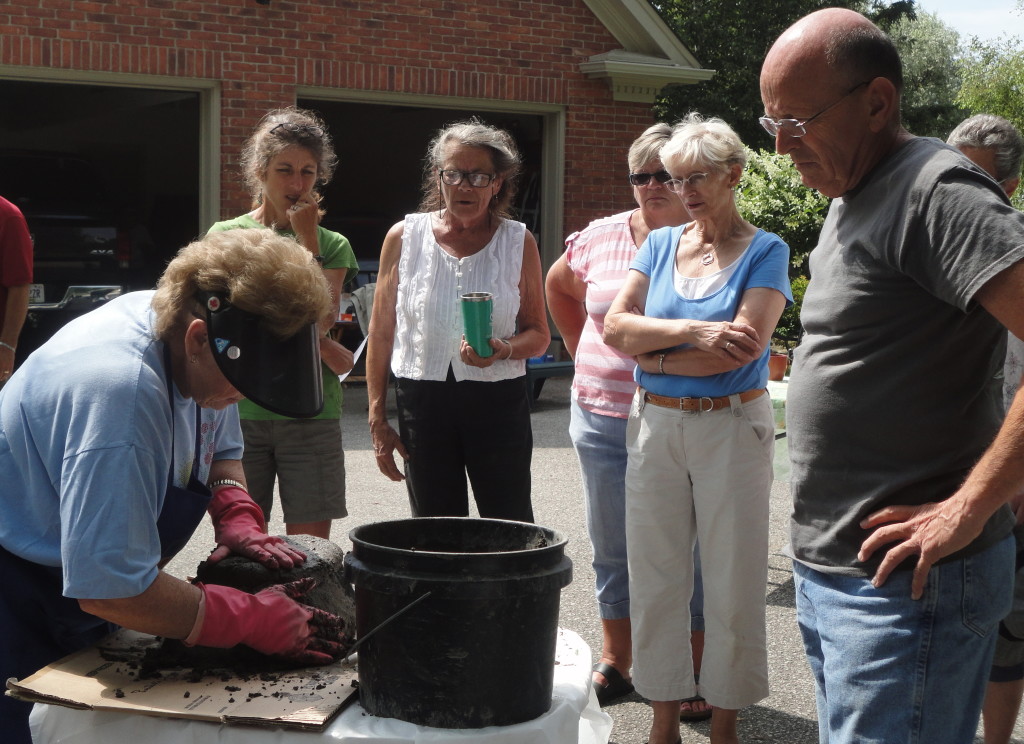It’s Still Just Dirt – September 2015, The Tillsonburg News
by Penny Esseltine
Jim Stinson is the go-to-guy at Canadale Nurseries in St. Thomas. He’s the one who can answer all of your horticultural questions. Jim has worked at Canadale for 30 years and he visited our Horticultural Society’s first post-summer meeting to tell us why fall is for making your garden amazing.
Jim says nurseries like Canadale reduce their plant prices by 20, 30, 40 and even 50 per cent at this time of year. “You can take advantage of the great prices at your local garden centres right now,” he says, “to add interesting new plants to your garden spaces.” Look for shrubs like fothergilla (bottle brush), sweetspire, oak-leaf hydrangea and viburnum, and perennials that bloom in the fall like toad lilies and fall anemones. “Fall leaf colour can be stunning.”
Here for your inspiration are just some of Jim’s fall gardening recommendations.
Clean out annuals. Toss your annuals, soil and all into your composter or onto your compost pile. They are done for the year.
Plant. Fall is the best time of the year to plant trees, shrubs, and perennials.
Refresh containers with fall colours. Replace tired old annuals with beautiful fall mums, asters, kale and peppers. Add gourds, pumpkins, leaves and branches. Focus on fall before you prep your containers for winter display.
Dig, divide, and conquer perennials. September is a great time to divide irises, peonies, daylilies, sedum and hostas. Dividing now will give them time to re-establish and they will grown twice as nice in the spring. “As a rule of thumb,” Jim says, “perennials that bloom in the spring should be divided in the fall. Perennials that bloom after mid-June are best divided in the spring.”
Jim says there’s no need to cut perennials back in the fall. Again, his rule of thumb, “if they look good leave them. If they look bad then cut them back.” Leave coneflowers because the birds will feast on the seeds in the flower heads through the winter.
Protect tender roses. In late fall hill up soil and mulch around rose bushes or cover them with rose covers. Clean up fall leaves that can be diseased. Attach climbing roses to supports. Jim says pruning your roses is usually best left until spring.
Improve your lawn. You can improve your lawn by sowing grass seed Jim says. As well he recommends fertilizing your lawn twice in the fall, both at Labour Day and again after Thanksgiving. “The after-Thanksgiving fertilizer will start to work quickly in the spring.”
Protect your garden from winter’s worst. “Keep watering until you are green in the face,” Jim says. Most plants need lots of moisture going into winter. This is especially true for evergreens that are susceptible to desiccation, winter burn, or winter kill. Regular watering will reduce the stress on your plants.
Evaluate your garden. Look at the successes you’ve enjoyed in your garden this year and consider the failures Jim says. “Consider what worked and what didn’t work and why. Make notes and sketches to help plan for next year’s garden changes.”
“Invite constructive criticism,” Jim says. “I want an artist to come over and tell me how to improve my garden. They see things differently.” Ask someone who has a different perspective to tell you what they like and what they would change about your garden.
Think spring. Spring flowering bulbs like tulip, daffodil, crocus, hyacinth, allium, and lilies can go in the ground now. Jim’s advice it to outsmart squirrels with squirrel-resistant bulbs. He says, “Cover your tracks by putting leaves over where you plant bulbs. Squirrels are smart and look for disturbed soil.”
The Tillsonburg Horticultural Society meets the first Tuesday of each month in the Senior Centre Auditorium at the Tillsonburg Community Centre. For additional information about the society visit tillsonburghorticultural.ca.

